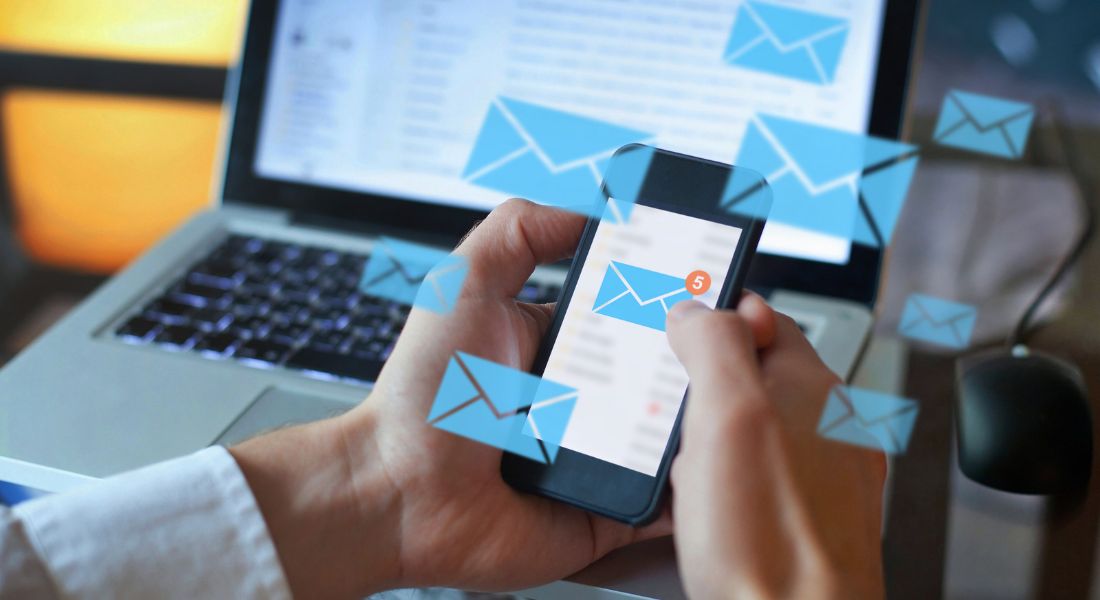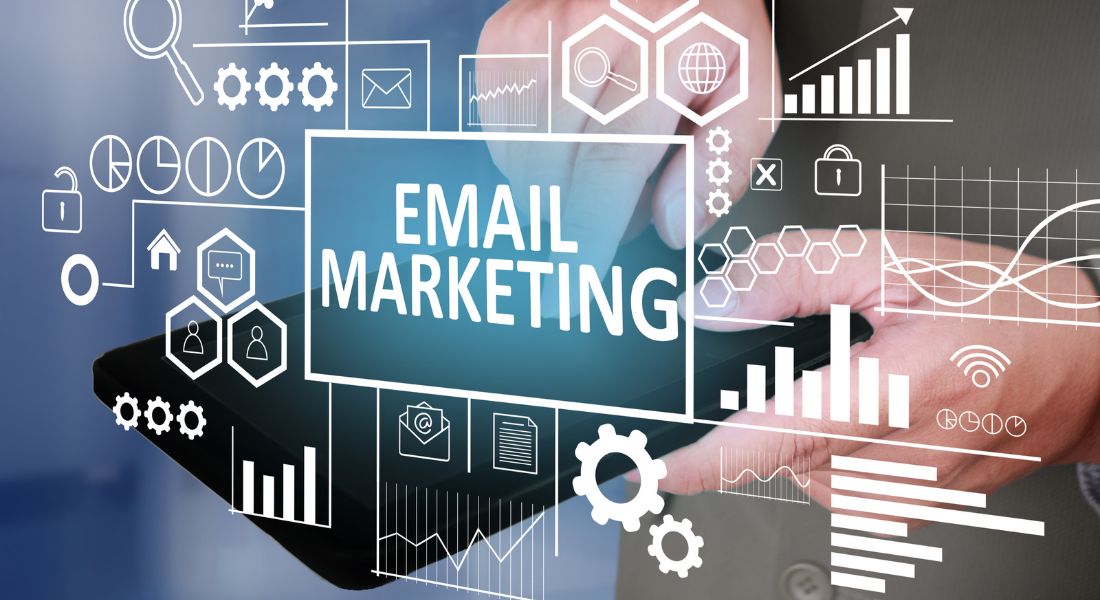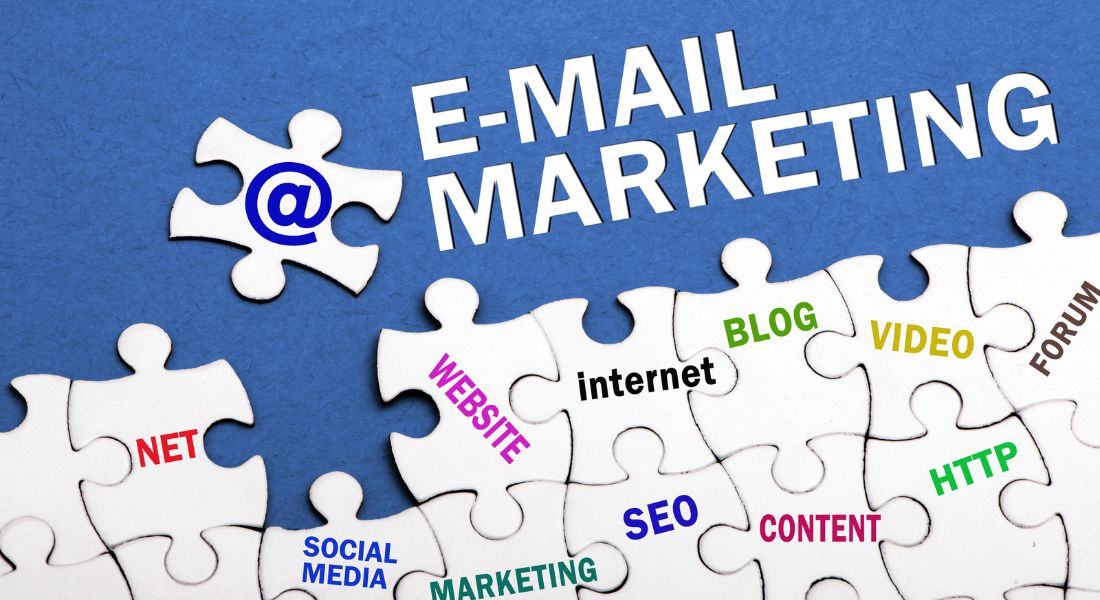Oh, the world of email, an exciting yet tricky endeavour. The task of crafting the perfect email subject line alone can feel like a lot of work. As a marketer, the balancing act between being too casual, too formal, too sales-y etc, is all too real. If one thing is certain, it’s that you’ve likely had experiences where you’ve spent an exorbitant amount of time crafting an email, only to see it fall flat amongst your subscribers. It may even begin to feel like a waste of your precious time – until you nail it, reaping the benefits of a job well done.
What is the key to crafting messages that get opened, read, and incite people to take action? While there’s no one-size-fits-all answer, an email list full of responsive subscribers can certainly up your chances of success. There are however a few actionable tips and tricks you can incorporate into your strategy to help you write more effective email copy. In this post, we’re going to explore some of those tips and tricks – arming you with the tools to set yourself up for success every time you set out to pen an email.
Quick Clarification of Key Points
Effective email copy is a layered thing. It begins with knowing your audience, and crafting your message accordingly. Make sure your copy is concise, engaging, and includes a call-to-action to encourage readers to take action. Think of your emails as a story influenced by your subscribers, a narrative that holds their interest and makes them a part of the unfolding sequence of events.
Post Contents
ToggleBe Thought Provoking
If you are writing an email to promote a product or idea, consider being thought-provoking in your copy. The benefits to doing this are that people are more likely to interact with an email if it sparks an interesting take on a subject matter or causes them to think in a new way. You can achieve this through the use of juxtaposition of two ideas, rhetorical questions, or intriguing statements; but the work doesn’t stop there. Provoking thoughts will help your readers form opinions and actively engage with your message.
For example, ask yourself ‘Would my targeted audience be more apt to purchase this product if they know it helps reduce plastic waste?’ You could then state something like ‘Be part of the revolution and help us fight against plastic waste’. This rhetorical question may spark an internal debate with your reader about what is important for them right now and how their choice can affect our environment in a positive way.
By making thought-provoking statements in your email copy, you can get your reader pondering over the advantages of choosing your product. Instead of just stating bare facts about it, weave in a storyline explaining why they should care and how that affects others around them. Doing so creates an emotional connection between your email content and your potential customers and increases the chances of people taking action on your call to action.
It is important to keep in mind that provocative emails must also be balanced with respect for each opinion that exists amongst your recipients. Maintaining politeness and respectfully engaging with any opposing arguments is essential when using this persuasive tactic.
Conclusively, when crafting effective email copy, being thought-provoking can help create a connection between yourself and others who read it, engage them in conversation, and increase conversions. Now, it’s time to shift our focus to some valuable ways to add a strong call-to-action at the end of your emails that motivates readers to take action.
- According to an Email Marketing Industry Census, email is the most widely used marketing channel, with 81% of marketers claiming it delivers the highest ROI.
- A 2017 survey found that personalised emails result in 6x higher transaction rates than generic emails.
- According to a study by GetResponse, the average click-through rate across industries for email campaigns was 2.62%.
Create a Call to Action
Once you’ve crafted your thought-provoking email, the work is not quite finished. The next step is to create a compelling call to action. This is your golden opportunity to encourage readers to take that next leap – whether that’s purchasing your product, filling out an important form, or simply joining a cause – and to escort them along in their journey with your company or brand.The effectiveness of calls to action can depend greatly on the context they’re used in, whether that’s on a landing page, or within an email. While some businesses benefit greatly from strong language like “Buy Now!” Others need to use softer tones like “Find out more.” Your tone should be tailored to fit the brand identity and message you’re trying to convey. Within this blog post, I’ll provide a list of things you should consider when crafting your email and landing page copy. Whatever you choose, make sure the words are clear and concise so that the reader knows exactly what they are being asked to do and that these principles are in place throughout your copy.
It can also help to include incentives for taking action immediately, such as limited-time discounts or free gifts. Statistics and data have also shown that email campaigns with visuals, such as buttons or other graphical elements, can improve click-through rates by up to 28 percent. For examples of these dynamics in action, you can refer to the previous sections of this post.
When it comes to crafting effective calls to action, strive for balance – strong enough language that will urge people to act, but not so strong that it turns them away. With this in mind, and with my email copywriting tips, you’ll soon find yourself crafting emails with calls to action that drive people forward in the customer journey while remaining true to your brand and message. This brings us neatly onto our next topic – how should we use tone of voice when writing effective email copy?
The tone of voice used in your email copy is an extremely important consideration when crafting engaging messages. It should be authentic, speak to the reader as though you’re in front of them, and evoke emotion. Using the wrong tone can leave readers feeling confused or uninterested in your message.

Tone of Voice
Writing emails with a light-hearted, positive tone often works best – this type of friendliness creates a sense of trust in readers and encourages them to return for more. On the other hand, it’s important not to come across too forced or overzealous in your attempt to be friendly – this can easily turn people off from your message.
At the same time, there are certain circumstances where a more serious tone may be appropriate. For instance, if you’re sending an email related to a sensitive topic like finance or health, it’s best to take an authoritative approach and keep your language professional and concise. This establishes credibility and shows that you know what you’re talking about.
Ultimately, the tone of voice used in your email copy will depend on its purpose and audience. Experimenting with different tones can help determine what resonates best with readers, but it’s useful to always bear in mind one key principle: never try too hard. Authenticity and sincerity should be top priorities when writing engaging email copy.
Now that we have discussed how to create effective calls-to-action and how to use the right tone of voice, let’s move on to consider how we can craft our messages with language that appeals to our audience while being subtle yet impactful.
The language you use in your email should appeal to your target audience, as it will vastly improve the impact of your message. For instance, if you have a younger target demographic, you should avoid using overly formal or antiquated terminology that could potentially alienate them. Overall, these email copywriting tips and examples should provide a comprehensive place to start and guide for anyone looking to improve their email marketing efforts.Similarly, if your target audience is business professionals, then an overly casual tone may seem unprofessional, creating a negative impression. The job of a skilled writer in this context is to craft an experience that resonates with these clients. Thus, maintaining a quality balance between professionalism and readability.
Use Language that Appeals to the Audience
It can be instructive to consider the kind of language that resonates with your audience. This can be gauged by the business publications they consume and the content they share on social media. These valuable features of your audience’s preferences help to tailor your language accordingly, resulting in an experience that evokes their preferred style and tone.
When writing for consumers, it is also crucial to ensure that the messages sound personalised. Some brands have tested this approach against more generic messaging and found out that people respond more positively when the communication feels tailored directly to them. This promising finding supports the more focused approach that promises benefits from sending targeted marketing emails. Consequently, this could help to forge stronger connections with customers while simultaneously boosting response rates.
Ultimately, choosing language that appeals to the audience comes down to understanding their wants and needs, and creating content that reflects these aspects back at them. By ensuring your carefully curated marketing emails are on brand for both tone and style, you will increase engagement from your audience, who in the grand scheme of things, are the people that matter the most.
With this in mind, it’s time to embark on the next step in crafting an effective email: crafting a persuasive message board. To do this well takes some serious planning and the ability to empathise with each person’s interests. Fortunately, although this takes extra time, the promise of payoff in dividends is a worthy reward, as, in this manner, you are able to send marketing emails that truly resonate with recipients.
Now that we’ve discussed the importance of picking persuasive language, it’s time to dive into the structure of a persuasive message. A great tool for enhancing your content’s persuasiveness is a message board. A message board facilitates a dialogue between yourself and potentially hundreds of people at once. This open forum can lead to valuable conversations and a reliable platform for users to provide feedback or leave their thoughts on your product or service.

Develop a Persuasive Message Board
When you’re creating a persuasive message board, never underestimate the power of positive reinforcement and the usefulness of rewards in encouraging discussion within your community. Similarly, it’s crucial to respond actively to any criticisms, ensuring users feel heard and valued. Initially, it’s advisable to provide content guidelines as you launch the message board, clarifying the type of content that is acceptable and desired, which will foster meaningful conversations.
In conclusion, developing a message board equips individuals with an effective and controlled platform to express their views and gives you the advantage of curating the content being presented. An effective message board is not just a communication tool but also a vital ingredient in ensuring that your marketing emails provide users with an integrated platform to connect with your company about your products or services. All it takes is a little creativity and thoughtful planning to craft a strong message board, a crucial element in engineering engaging email copy.
In the realm of editing and blog posts, it’s equally important to address any questions and concerns readers may have. Next, within the feature of our team blog, let’s discuss storytelling and how best one might find themselves addressing these issues so that readers feel heard and understood by your email copy.
Once you and your team have developed your persuasive message board, the next task is editing and addressing readers’ questions and concerns when crafting engaging email or even blog posts. To do this, you should always be aware of the potential objections or uncertainties that readers may have. Before writing any copy for your email or blog, make sure to research what kind of questions and concerns your target market may have about your message or product. This way, you can address those issues proactively in the copy itself and truly enhance the editing feature of your storytelling narrative, enabling a more effective email marketing campaign.
You can also use a technique called “The Empathy Effect” in which you turn the reader’s own doubts and hesitations into proof that your products are the best option. Just as you would when creating blog posts on your team blog, for example, if a reader is unsure of how long your product may last, you could use their doubt to explain that your product contains reliable materials and has a lifetime guarantee, providing a powerful storytelling feature that reassures customers it will stand the test of time. By anticipating readers’ doubts and addressing them head-on in the copy, you can prove through storytelling and editing that your product is the best option on the market.
Address Readers‚ Questions and Concerns
By focusing on readers’ questions and concerns, you can create a powerful email copy that makes potential customers feel heard and secure that any purchase from them will be worthwhile. This type of approach ensures that readers stay engaged with your email marketing campaigns and keep coming back for more. So, just as in crafting engaging blog posts with an effective editing process, by mastering these key techniques, you will be well on your way to mastering the art of copywriting for email marketing.
Crafting effective email copy or informative blog posts is the lifeblood of any successful email marketing strategy or team blog. Copywriting allows marketers to effectively communicate with their target audience, while also allowing them to reach potential customers with well-crafted words that compel readers to take action. The storytelling feature inherent in this process enhances both the engagement and editing aspects.
At its core, copywriting for email marketing, much like writing engaging blog posts, is about knowing how to write in a way that resonates with your target audience. Effective copywriters know how to match their content to their readers’ needs and wants. They create content that speaks directly to their readers and address questions and concerns they have. This means understanding who your target audience is, knowing their wants and needs, and addressing them in an engaging way while keeping the core of editing and storytelling intact.

Master the Art of Copywriting for Email Marketing
That said, mastering the art of copywriting for email marketing or penning engaging blog posts isn’t something you can do overnight. It takes practice, editing, research, trial and error, and patience. Good copywriters have a keen eye on what works and what doesn’t by monitoring open and click-through rates. By testing different messaging strategies and methods of engagement, marketers can determine which tactics are most effective when crafting their emails or blog posts. Storytelling becomes an integral ingredient in the mix, which when enhanced by skillful editing, can truly feature the power of a well-written narrative.
At its core, copywriting for email marketing is about knowing how to write in a way that resonates with your target audience. Effective copywriters know how to match their content to their readers’ needs and wants. They create content that speaks directly to their readers and address questions and concerns they have. This means understanding who your target audience is, knowing their wants and needs, and addressing them in an engaging way.
That said, mastering the art of copywriting for email marketing isn’t something you can do overnight. It takes practice, research, trial and error, and patience. Good copywriters have a keen eye on what works and what doesn’t by monitoring open and click-through rates. By testing different messaging strategies and methods of engagement, marketers can determine which tactics are most effective when crafting their emails.
Now that you’ve addressed the questions and concerns your audience may have, it’s time to focus on the structure of your emails. You’ll need to get to the point quickly and be concise in order to capture readers’ attention and keep them engaged till the end. After all, nobody wants an overly long or tedious message cluttering up their inbox. To achieve this goal, it’s important to be thoughtful about the words used as each one plays a key role in engaging readers with your brand message. This means making sure each word in your email captures the right emotion or sentiment, as well as gets your main point across without beating around the bush or straying off topic.
Get to the Point Quickly and Concisely
Good copywriting for email marketing often involves getting to the point quickly and concisely. Writing in a straightforward manner helps to grab readers’ attention more quickly. After all, emails are meant to be read and digested rapidly — long, rambling emails can easily lose your recipient’s interest.
When crafting your message, be mindful of language use but keep it succinct. Choose single words over full phrases when possible as they tend to take fewer characters. Shorter lines also appear tidier and more appealing in inboxes– and help you stay under the upper character limit. Focus on delivering your message without the extra details: state your key points early on and include only the essential supporting points in your email copy.
Some argue that meticulous copywriting is best for all emails since it reflects attention-to-detail and gives readers a greater insight into what you have to say. However, evidence indicates that overly strict or lengthy writing styles can make emails difficult to follow or cause readers to miss important details. Preferably, you should strive for a good balance between concise info delivery and enough explanation so recipients don’t feel overwhelmed with information overload.
Making sure you get to the point quickly and concisely is key when writing effective email copy. Beginning with an engaging hook or subject line also helps capture attention, pique curiosity, and guide recipients through each element of the message while avoiding unnecessary fillers or redundancies (as these can turn off readers). By following these tips, you will help ensure your audiences remain engaged with your email content as you transition into the next section of this article -considering your goal and audience for your email message- allowing them to better understand your message in totality.

Consider Your Goal and Audience in Writing Effective Email Copy
Once you have created a concise and clear subject line for your email, it is important to consider your goal and audience when crafting an effective message. Knowing why you are writing the email and who you are targeting can help you tailor the language and content of your message to best meet those objectives.
When considering your goal, think about the action that you would like your audience to take after reading the email. If you are interested in a response from them in some way, make sure that you provide relevant information to encourage feedback or further engagement. For example, if you are hoping to increase attendance at an event, include details such as how long it will take to get there and what they can expect to gain from attending. This can help motivate readers to take the desired action.
It is also important to consider the needs of your target audience when crafting email copy. What motivates them? What calls-to-action do they typically respond positively to? Thinking about these factors ahead of time can help ensure that your messages stand out among others in their inbox and result in higher engagement. Additionally, be sure to use language that resonates with your target audience throughout your emails. Aim to make your messages personal when possible by incorporating first person statements and creating an informal yet professional tone that relates with them on a deeper level.
In conclusion, taking the time up front to consider both your goals and target audience will enable you to create more effective emails. Keep in mind that each side of this equation is essential when crafting effective email copy – understanding what action you want recipients to take and tailoring language specifically for them will lead to stronger results across the board.
Common Questions
What are the best practices for email copywriting?
The best practises for email copywriting are to keep your message concise and to the point, personalise the content for each recipient, use powerful language that resonates with your audience, focus on less is more when it comes to visuals, include a clear call-to-action, use an appropriate tone that suits your brand, and be sure to proofread and test any links in the email.
When crafting messages, make sure your subject line stands out and catches the reader’s attention. Additionally, keep your emails as short as possible; no one wants to read a wall of text. Include relevant links where necessary and break up long blocks of text with visuals or media like GIFs or videos. Lastly, pay attention to preheader text which is often visible right after the subject line in an inbox. To ensure success, always measure and analyse results from campaigns and optimise accordingly so you can continuously improve.
How can I make sure my emails are engaging and persuasive?
One of the most effective strategies for crafting engaging and persuasive emails is to focus on creating compelling subject lines. Make sure your subject line is concise, relevant to the content of your email, and clear about what readers can expect upon opening it. Additionally, try to personalise the subject line by including variables such as someone’s name or industry.
In the body of the email, break up texts with lots of white space and use headings and subheadings to guide the reader’s eye. Also maximise urgency by making an offer that has clear deadlines and utilising simple phrases like “Hurry” or “Act Now!” Choose a professional voice when writing which exudes confidence in the stated message. Incorporate images that support the topic with captions to reinforce its importance.
Finally, make sure that your emails have a sense of purpose; they should always add value for the person receiving them. It will also be beneficial if each email contains a call-to-action such as asking readers to click through to a website, purchase an item or sign up for something so that they take an action after reading it.
What are the key elements of effective email copywriting?
The key elements of effective email copywriting include having a clear goal and purpose, ensuring the message is concise yet compelling, utilising an enticing subject line, using a call-to-action, personalising the message, and optimising for mobile.
First and foremost, it’s crucial that you have a clear goal and purpose for your email: what is it you want to achieve with your message? Is it to generate sales leads? Offer customer support? Introduce someone to your brand? Without a goal or purpose in mind, your email won’t reach its full potential.
Second, ensure the message you’re sending is concise yet compelling. You don’t want to bombard readers with too much information; they will either be overwhelmed or too lazy to read something lengthy. Focus on providing just enough content so that recipients understand why they should take action—but without making them scroll endlessly to read more.
Third, craft an enticing subject line. This is one of the most important aspects of email copywriting—it’s what motivates users to open (or ignore) your message! Put thought into creating subject lines that are catchy but not misleading; otherwise, you could end up damaging your reputation and spam scores.
Fourth, use a call-to-action (CTA). Your CTA should clearly direct readers towards the end goal—for example, clicking >link< now for 15% off our products! Keep it simple yet attention-grabbing to motivate people to make an effort towards completing the desired task.
Fifth, consider personalising your emails where possible. Depending on what you’re trying to achieve with your message, it can help to address people directly by name or tailor content around an individual recipient’s interest and preferences. Doing this helps make recipients feel special while increasing the chances that they will respond accordingly.
Lastly, optimise for mobile devices. It goes without saying nowadays that most people access their emails via a smartphone or tablet device; therefore it’s important that the content displays in a user-friendly format when opened on such screens. Be mindful of image size and text formatting so that everything looks visually appealing regardless of device type used.





